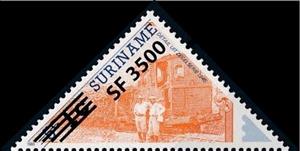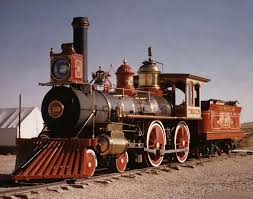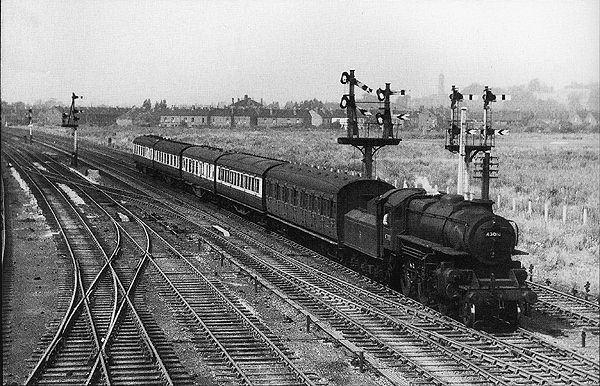Stamp: Detail of stamp MiNr 249 (2nd Overprint) (Suriname 2003)
Detail of stamp MiNr 249 (2nd Overprint) (Suriname 2003)
01 November (Suriname ) within release Railway Locomotives goes into circulation Stamp Detail of stamp MiNr 249 (2nd Overprint) face value 3,500 Surinamese guilder
| Stamp Detail of stamp MiNr 249 (2nd Overprint) in catalogues | |
|---|---|
| Michel: | Mi: SR 1888 |
| Stamp Number: | Sn: SR 1303a |
Stamp is square format.
Also in the issue Railway Locomotives:
- Stamp - Detail of stamp MiNr 249 (2nd Overprint) face value 3,500;
- Stamp - Monaco Locomotive stamp MiNr 45 (2nd Overprint) face value 3,500;
- Se-tenant - Detail of stamp MiNr 249 & Monaco Locomotive stamp MiNr 45 … face value 7,000;
Stamp Detail of stamp MiNr 249 (2nd Overprint) it reflects the thematic directions:
A locomotive is a rail transport vehicle that provides the motive power for a train. If a locomotive is capable of carrying a payload, it is usually rather referred to as a multiple unit, motor coach, railcar or power car; the use of these self-propelled vehicles is increasingly common for passenger trains, but rare for freight trains.
Railways - Transportation system made up of metal rails which is designed to allow trains to maneuver on the tracks from one location to the next.
The Kionga Triangle (German: Kionga-Dreieck, Portuguese: Triângulo de Quionga) was a small region of German East Africa situated at the mouth of the Ruvuma River. The Ruvuma served as the border between the German colony and Portuguese Mozambique, and the Kionga Triangle was the only section of German East Africa south of the river. Its principal settlement was Kionga (now Quionga ) which had a population of 4,000 in 1910. It became a German possession in 1894 but came under Portuguese control in April 1916 during World War I. The post-war Treaty of Versailles reaffirmed that the river was the border between Tanganyika, then under British control, and Portuguese Mozambique. The triangle was the only territory that the treaty awarded to Portugal.


